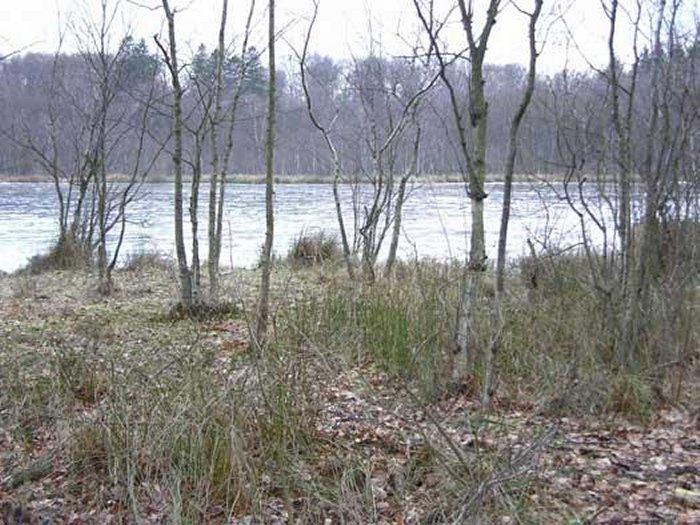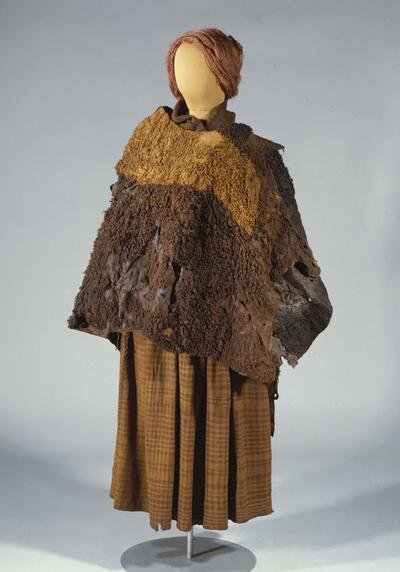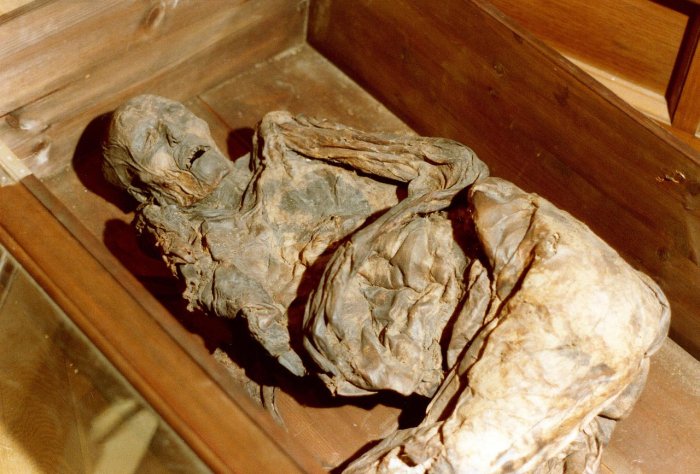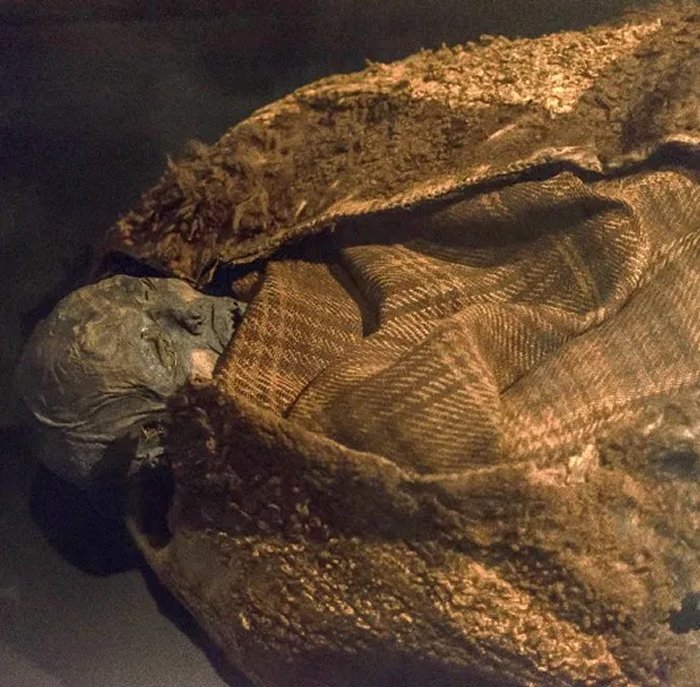Unsolved Mystery Of The Huldremose Woman: One Of The Best Preserved Bog Bodies Ever Found
Ellen Lloyd - AncientPages.com - In 1879, the body of a woman was found by workers digging peat turfs at Huldremose, Denmark.
Examination of the body revealed the woman died a violent death 2,000 years ago. She became known as the Huldremose woman and is today considered one of the best-preserved bog bodies ever discovered.
How her life came to an end remains an unsolved ancient mystery.
The woman found in a bog in Djursland died more than 2000 years ago. Image credit: National Museum of Denmark
The Huldremose woman was about 40 years old when she died. Today, it might sound as if she died at a young age, but back then, she was considered an old woman.
We do not know the exact circumstances surrounding the death of the woman from Huldremose, and why she was killed is unknown, but most likely, she was placed in the bog as a sacrifice.
How exactly she died has been debated. First, it was believed that the poor woman received a violent cut to the right upper arm and died as a result of blood loss. Later examinations have not confirmed this theory, and it is also possible that the injury occurred much later, perhaps during peat-digging in the bog. While the woman was alive, she broke her right leg, but this break healed again before she died.
Textile find from Huldremose. Image credit: National Museum of Denmark
Like most of the bog bodies found in Denmark, the woman from Huldremose was fully clothed. She wore a skirt of wool, a scarf, and a skin cape.
Bog body of the Huldremose woman. Image credit: Sven Rosborn
Her skirt was tied at the waist with a thin leather strap inserted into a woven waistband. The scarf was wrapped around the woman’s neck and fastened under her left arm with a pin made from a bird bone. The cape had been used a great deal and had 22 patches sewn on. The long period in the water of the bog has turned the clothes brown. Color analysis has shown that the skirt was originally blue, and the scarf was red.
The Huldremose Woman wrapped in her clothing. By Bradley Rentz — Own work, CC BY-SA 4.0.
She also had a ring on her finger, amulets in one of her skin capes, and two amber beads around her neck. The fact that the killers did not steal her possessions also suggests the Huldremose woman was sacrificed, but one cannot dismiss the possibility the woman was punished for some crime.
During the Iron Age, bogs were an extremely important resource for people. Turfs were dug there, which were used as building material and fuel. Some bogs contained iron ore, which was a raw material that, after processing, could be made into iron. The bogs, therefore, had a great significance in daily life.
To the Iron Age people, bogs and water regions were considered gateways to another world where gods resided. Making sacrifices to the gods was common, and sacrificing a human being was the greatest gift gods could receive.
Updated on December 16, 2023
Written by Ellen Lloyd – AncientPages.com
Copyright © AncientPages.com All rights reserved. This material may not be published, broadcast, rewritten or redistributed in whole or part without the express written permission of AncientPages.com
Expand for referencesMore From Ancient Pages
-
 New Archaeological Discoveries In The Temple Of Khnum At Esna, Luxor
Archaeology | Dec 29, 2022
New Archaeological Discoveries In The Temple Of Khnum At Esna, Luxor
Archaeology | Dec 29, 2022 -
 Carbon-12 – A Critical Gateway To The Birth Of Life Is Produced In Stars – Did Life Come From Cosmos?
Human Beginnings | May 23, 2022
Carbon-12 – A Critical Gateway To The Birth Of Life Is Produced In Stars – Did Life Come From Cosmos?
Human Beginnings | May 23, 2022 -
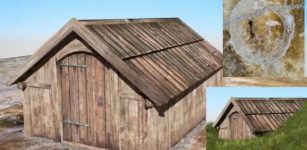 Very Rare Discovery: Viking Age Mortuary House Unearthed In Central Norway
Archaeology | Sep 29, 2019
Very Rare Discovery: Viking Age Mortuary House Unearthed In Central Norway
Archaeology | Sep 29, 2019 -
 Genghis Khan Has 16 Million Relatives – You Could Be One Of Them
Ancient History Facts | Feb 3, 2018
Genghis Khan Has 16 Million Relatives – You Could Be One Of Them
Ancient History Facts | Feb 3, 2018 -
 Powerful Chola Rulers Of Southern India: Patrons Of Architecture, Art And Literature
Civilizations | May 4, 2017
Powerful Chola Rulers Of Southern India: Patrons Of Architecture, Art And Literature
Civilizations | May 4, 2017 -
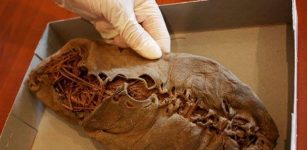 World’s Oldest Shoe Is 5,000-Year-Old
Archaeology | Jul 10, 2015
World’s Oldest Shoe Is 5,000-Year-Old
Archaeology | Jul 10, 2015 -
 Sun: Highest Cosmic Power Worshiped By Ancient People And Represented By Deities
Featured Stories | Apr 1, 2019
Sun: Highest Cosmic Power Worshiped By Ancient People And Represented By Deities
Featured Stories | Apr 1, 2019 -
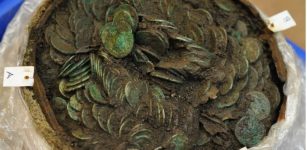 Roman Coin Hoards Found In The Conwy Valley Declared Treasure
Archaeology | Oct 20, 2023
Roman Coin Hoards Found In The Conwy Valley Declared Treasure
Archaeology | Oct 20, 2023 -
 Goddess Xi Wangmu (Xiwangmu) Who Controlled Life, Death, Creation And Talked Directly To Humans In Chinese Mythology
Chinese Mythology | Mar 12, 2020
Goddess Xi Wangmu (Xiwangmu) Who Controlled Life, Death, Creation And Talked Directly To Humans In Chinese Mythology
Chinese Mythology | Mar 12, 2020 -
 Amazing Victorian Time Capsule – 135-Year-Old Message In A Bottle Found In Edinburgh
Archaeology | Nov 22, 2022
Amazing Victorian Time Capsule – 135-Year-Old Message In A Bottle Found In Edinburgh
Archaeology | Nov 22, 2022 -
 Utukku: Sumerian Spirit From The Underground That Obeyed The Will Of God Anu
Featured Stories | Jun 17, 2016
Utukku: Sumerian Spirit From The Underground That Obeyed The Will Of God Anu
Featured Stories | Jun 17, 2016 -
 European-Made Sealed Bottles Of Cherries Dated To 18th Century Found At Washington’s Mount Vernon
Archaeology | Apr 23, 2024
European-Made Sealed Bottles Of Cherries Dated To 18th Century Found At Washington’s Mount Vernon
Archaeology | Apr 23, 2024 -
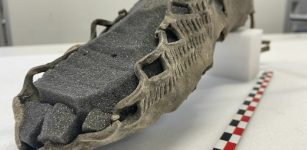 Startling Roman-Looking Sandal Discovered Buried Deep Beneath The Snow In Norwegian Mountains
Archaeology | Apr 13, 2022
Startling Roman-Looking Sandal Discovered Buried Deep Beneath The Snow In Norwegian Mountains
Archaeology | Apr 13, 2022 -
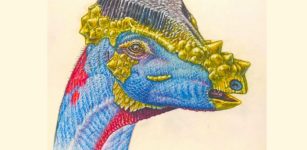 Newly Described Species Of Dome-Headed Dinosaur May Have Sported Bristly Headgear
News | May 24, 2023
Newly Described Species Of Dome-Headed Dinosaur May Have Sported Bristly Headgear
News | May 24, 2023 -
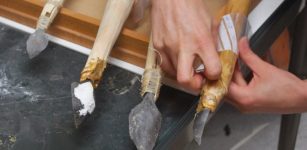 Oldest Known Spearthrowers Found At 31,000-Year-Old Archaeological Site Of Maisières-Canal
Archaeology | Nov 6, 2023
Oldest Known Spearthrowers Found At 31,000-Year-Old Archaeological Site Of Maisières-Canal
Archaeology | Nov 6, 2023 -
 Ancient Secrets Of The Amazon Jungle – The Man Who Stepped Into The Unknown Searching For The Lost City Of The Gods – Part 2
Ancient Mysteries | Mar 5, 2019
Ancient Secrets Of The Amazon Jungle – The Man Who Stepped Into The Unknown Searching For The Lost City Of The Gods – Part 2
Ancient Mysteries | Mar 5, 2019 -
 A Tooth That Rewrites History? The Discovery Challenging What We Knew About Neanderthals
DNA | Oct 23, 2023
A Tooth That Rewrites History? The Discovery Challenging What We Knew About Neanderthals
DNA | Oct 23, 2023 -
 Surtshellir Cave Reveals How Vikings Attempted To Prevent Ragnarök – Doom Of The Gods
Vikings | Jul 17, 2023
Surtshellir Cave Reveals How Vikings Attempted To Prevent Ragnarök – Doom Of The Gods
Vikings | Jul 17, 2023 -
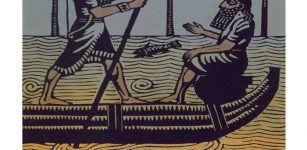 Missing Lines From Epic Of Gilgamesh Shed New Light On Humbaba
Artifacts | Oct 9, 2015
Missing Lines From Epic Of Gilgamesh Shed New Light On Humbaba
Artifacts | Oct 9, 2015 -
 Medieval Mystic Nicholas Of Cusa’s Fascinating Ideas On Extraterrestrials Inspired New Ways Of Thinking About Our Place In The Cosmos
Featured Stories | May 6, 2025
Medieval Mystic Nicholas Of Cusa’s Fascinating Ideas On Extraterrestrials Inspired New Ways Of Thinking About Our Place In The Cosmos
Featured Stories | May 6, 2025

